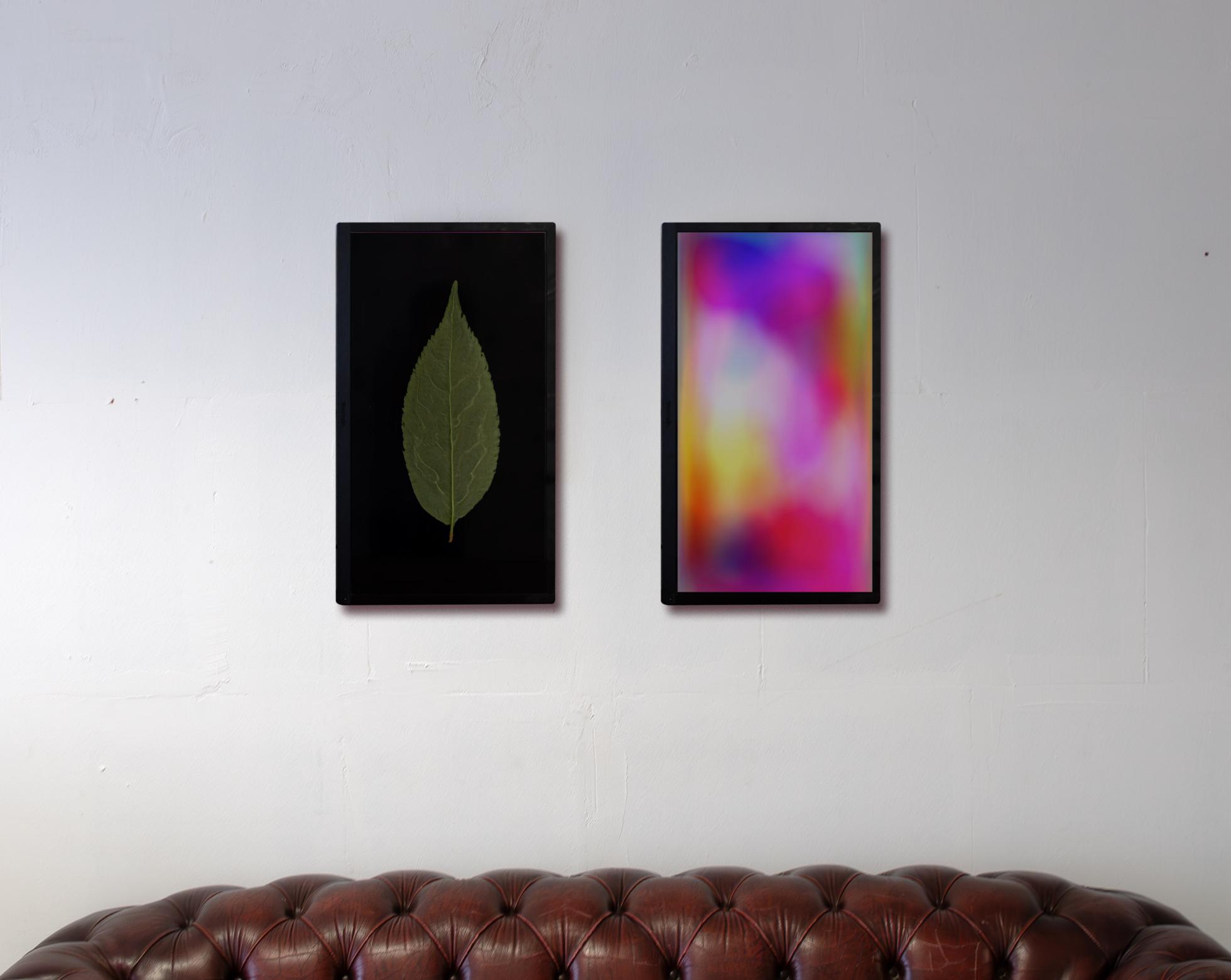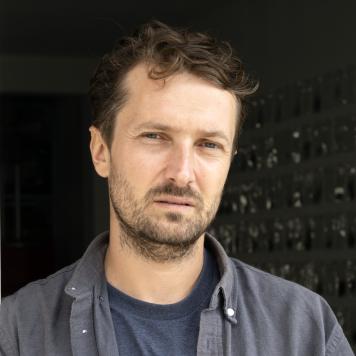The video installation Graines aléatoires is part of a collaborative project with AI researcher Romain Trachel, aimed at generating images of tree leaves via an AI specifically developed for this task. The installation consists of two synchronized screens. One shows leaves generated at 25 frames per second by the trained AI, while the other displays color gradients created by the untrained model. This contrast explores the tension between abstraction and representation, revealing the evolution of the AI in a latent and multidimensional space.
Random seeds
Find out more
The video installation Graines aléatoires is part of a larger project titled Les feuilles de l'arbre qui n'existe pas. This project encompasses all the work done in collaboration with AI researcher Romain Trachel. Since 2017, we have developed a generative AI that reproduces tree leaves. To achieve this, I create a database of photographs of leaves collected directly from trees. The leaves are dried, digitized, and archived.
Each collection follows a similar protocol: it occurs on a specific day and on a specific tree, with each collection focusing on a different tree species. In this project, I serve as the assistant to the algorithm, feeding it data.
Regarding the Graines aléatoires video installation, it features two synchronized screens. The first screen displays a video from the AI that Romain and I trained, which generates leaf images at a rate of 25 frames per second. These images evolve based on the algorithm's movement through the imaginary space it mapped during training, often referred to as navigating the latent space.
The second screen showcases the same algorithm’s movement, but this time using an untrained model. This untrained algorithm generates dense color gradients that utilize the entire chromatic spectrum.
As I worked on rendering the leaf images, I became intrigued by these "non-images" represented by the gradients. These are the first images produced by the untrained model, marking the beginning of the algorithm's learning process. This first image is generated randomly, and the installation’s name derives from this technique, known as "random seed."
In these gradients, I discerned abstractions that represent potential images. Faced with the same algorithm trained on leaves—thus trained to reproduce natural elements—a tension emerges between realism and the calculated image. Like the two sides of a coin, which coexist as part of the same object while being opposites, abstraction and representation evolve in harmony with the algorithm’s calculations and its movement through this multidimensional mathematical space.
Votre contact
Merci pour votre contribution.
Vous serez informés de sa publication ou d’une éventuelle demande de compléments.















